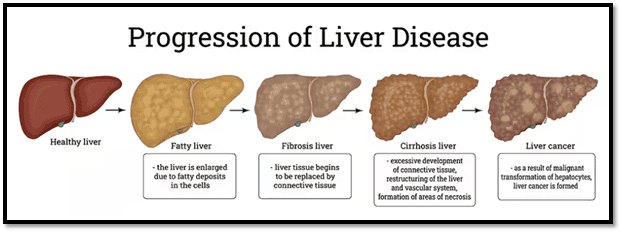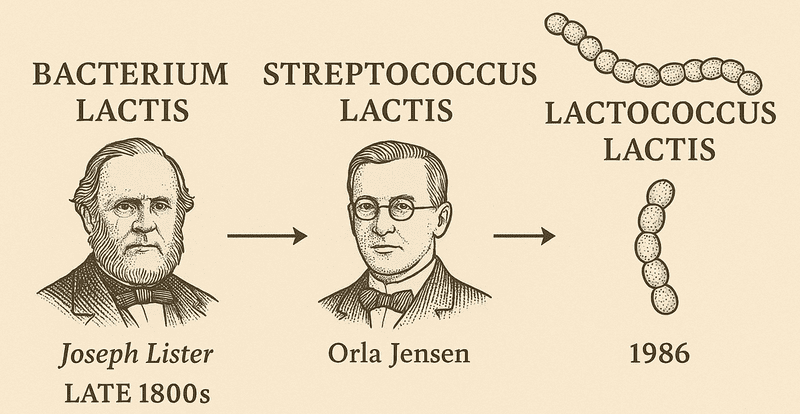History
Lactobacillus fermentum is an obligate heterofermentative bacterium known for its ability to ferment sugars into lactic acid. This bacterium was first described by Beijerinck in 1901. Lactobacillus reuteri, which was initially classified with Lactobacillus fermentum, was later separated into a different species due to its genetic makeup. In 1953, Rogosa et al. isolated a bacterium for the first time and identified it as Lactobacillus cellobiosus. Although this newly isolated bacterium showed genetic similarity with L. fermentum, it exhibited unique biochemical and physiological traits; hence, it was assigned as a biovar of Lactobacillus fermentum. In 2020, it was reclassified into the genus Limosilactobacillus due to its genetic characteristics.
Health Benefits
Limosilactobacillus fermentum is a bacterium that is relatively less popular compared to its Lactobacillus relatives. Recent research in microbiome science has shown that the importance of L. fermentum extends beyond gut health, as it is also associated with oral and vaginal health. It possesses several health-promoting properties, including anti-inflammatory, anti-infective, cholesterol-lowering, and immunomodulatory effects, as well as the prevention of allergic reactions. L. fermentum benefits skin health by protecting the skin from harmful sun radiations.
Studies have demonstrated that supplementation with Limosilactobacillus fermentum reduces the incidence of gastrointestinal and upper respiratory tract infections in infants, as it inhibits the adhesion of pathogens to the mucosal lining and increases mucin production, which further contributes to pathogen elimination. Recent research also shows that supplementation with L. fermentum, either alone or in combination with other probiotics, alleviates symptoms associated with bacterial vaginosis, vulvovaginal candidiasis, and even recurrent urinary tract infections.
In animal models, strains of Limosilactobacillus fermentum have been shown to prevent alcoholic steatohepatitis via the gut–liver axis by restoring intestinal barrier function and reducing alcohol-induced inflammatory markers. It has also shown to exhibit anti-diabetic properties. Additionally, studies indicate that L. fermentum exhibits anti-proliferative, antioxidant, and pro-apoptotic properties in colorectal cancer cell lines, suggesting it may reduce the risk of colorectal cancer development.
Taken together, evidence suggests that L. fermentum plays an important role in overall well-being. However, further research is needed to confirm its efficacy and to assess any potential negative effects associated with this probiotic.
Applications
Despite the fact that the health benefits of Limosilactobacillus fermentum have only recently been understood, it has long been used in the food industry. Like other lactic acid bacteria, L. fermentum is employed as a starter culture in the preparation of both dairy and non-dairy fermented products. In addition to enhancing the flavor, texture, and odor of foods, it also acts as a natural preservative by inhibiting the growth of spoilage microorganisms.
Nitrites are commonly used for curing meats, imparting a desirable flavor and the characteristic pink color of cured meat. Nitric oxide, produced from nitrites, reacts with myoglobin (a skeletal muscle protein) to form nitrosylmyoglobin, which gives meat its pink color. However, nitrites can also react with secondary and tertiary amines to form N-nitrosamines, known carcinogens in the gastrointestinal tract. Therefore, the food industry is seeking alternatives to nitrites. Interestingly, one study inoculated a strain of L. fermentum into ground meat, which developed a pink color due to the formation of nitrosyl myoglobin, but without the use of nitrites, making it relatively safer for consumption.
L. fermentum is also one of the prominent species involved in the fermentation of cocoa beans during the chocolate production. Additionally, it is widely used in the production of an alcoholic beverage prepared from sorghum known as “Ikigage Beer.”

Did you know?
Limosilactobacillus fermentum ME-3 – The Manufacturer and Producer of the Master Antioxidant
If you are a fitness enthusiast, you have probably read or heard about the numerous benefits of glutathione(tripeptide of cystine, glycine and glutamic acid). Initially popular for skin whitening through intradermal injections, recent studies have shown that oral supplementation of glutathione can improve overall health, slow down the aging process, and delay the onset of age-related diseases. However, despite its multiple benefits, orally consumed glutathione is often broken down by stomach acids, reducing its effectiveness. To overcome this limitation, a newer form called liposomal glutathione has been developed, where lipid molecules protect glutathione from harsh gastric conditions.
Professor Marika Mikelsaar from the University of Tartu, Estonia, first isolated L.fermentum ME-3 from the intestinal tract of a healthy one-year-old child. To her surprise, this strain exhibited extremely high antioxidant activity. After 25 years of extensive research, studies revealed that L. fermentum ME-3 possesses all the molecular machinery required for glutathione production, earning it the title of the “complete glutathione system.”
In addition to its antioxidant activity, L. fermentum ME-3 also exhibits anti-inflammatory and detoxification properties, while supporting the immune system, making it essential for overall health. Since L. fermentum ME-3 can survive the harsh conditions of the stomach and effectively colonize the gut. It acts as a live factory of glutathione, providing a consistent supply of this vital antioxidant and overcoming the limitations of direct glutathione supplementation.

Microbe Profile
Shape : Rod shaped
Gram nature : Gram Positive
Spore formation : No
Biofilm formation : Yes
Oxygen requirement : Microaerophilic
Optimal temperature : 30-40°C
Optimal pH : 5-6.2
Nutrient usage : Hetero-fermentation-arabinose, cellobiose, galactose, maltose
Taxonomic classification
Domain : Bacteria
Kingdom : Bacillati
Phylum : Bacillota(Firmicutes)
Class : Bacilli
Order : Lactobacillales
Family : Lactobacillaceae
Genus : Limosilactobacillus
Species : Limosilactobacillus fermentum
-Khushi. C
References
Lim, H. W., Huang, Y. H., Kyeong, G., Park, M., & Lim, C. J. (2022). Comparative Insights into the Skin Beneficial Properties of Probiotic Lactobacillus Isolates of Skin Origin. BioMed research international, 2022, 7728789. https://doi.org/10.1155/2022/7728789
Naghmouchi, K., Belguesmia, Y., Bendali, F., Spano, G., Seal, B. S., & Drider, D. (2020). Lactobacillus fermentum: a bacterial species with potential for food preservation and biomedical applications. Critical reviews in food science and nutrition, 60(20), 3387–3399. https://doi.org/10.1080/10408398.2019.1688250
Zhao, Y., Yu, L., Tian, F., Zhao, J., Zhang, H., Chen, W., Xue, Y., & Zhai, Q. (2022). Environment-Related Genes Analysis of Limosilactobacillus fermentum Isolated from Food and Human Gut: Genetic Diversity and Adaption Evolution. Foods (Basel, Switzerland), 11(19), 3135. https://doi.org/10.3390/foods11193135
Zhang, X., Kong, B., & Xiong, Y. L. (2007). Production of cured meat color in nitrite-free Harbin red sausage by Lactobacillus fermentum fermentation. Meat science, 77(4), 593–598. https://doi.org/10.1016/j.meatsci.2007.05.010
Coulibaly, W. H., Boli, Z. B. I. A., Bouatenin, K. M. J., M'bra, A. A., Kouhounde, S. H. S., & Djè, K. M. (2022). Identification of non-Saccharomyces yeast strains isolated from local traditional sorghum beer produced in Abidjan district (Côte d'Ivoire) and their ability to carry out alcoholic fermentation. BMC microbiology, 22(1), 165. https://doi.org/10.1186/s12866-022-02560-8
Pelton R. (2022). Lactobacillus fermentum ME-3: A Breakthrough in Glutathione Therapy. Integrative medicine (Encinitas, Calif.), 21(4), 54–58.


